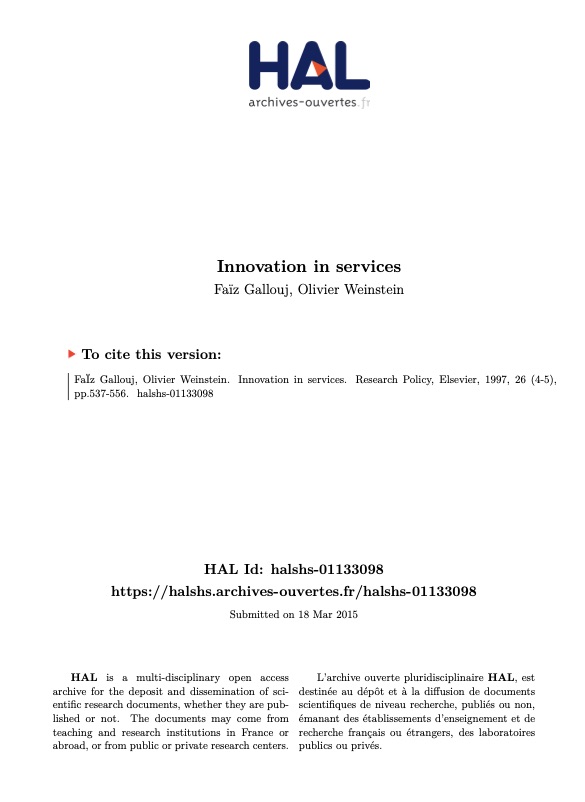Paper
Innovation in services
Gallouj, F., Weinstein, O. (1997)
Research Policy, Elsevier, 1997, 26 (4-5) ,pp.537-556. halshs-01133098
DOI: 10.1016/S0048-7333(97)00030-9The purpose of this article is to lay the foundations of a theory that can be used to interpret innovation processes in the service sector. The hypothesis underpinning this article is based on Lancaster's definition of the product (in both manufacturing and services) as a set of service characteristics. The article follows the example of those who have sought to apply Lancaster's work to technological phenomena. Various modes of innovation in the service sectors are highlighted and illustrated.
The paper is in three parts.
First it defines a product (service or goods) as a set of characteristics, a system, comprising {[C’], [C], [X], [Y]}. Where [C’] are the set of customer competences and [C] the firms competences. With [X] and [Y] being the final and technical characteristics.
It then defines a framework for the types of innovation that can occur, relating them back to the set of characteristics idea. Innovation can be:
- Radical – a new product (service or goods) that has characteristics unconnected with an old product
- Improvement – one or more characteristics are improved without changing the overall system
- Incremental – general structure of the system remains intact and new characteristics are added to [X] and/or [Y] (or certain elements are replaced)
- Ad-hoc innovation – generated at the interface of client/provider and can be jointly created (often they happen and are not recognised as innovations until afterwards). Closely linked to the cumulative learning process. Reliant on the type of interface – “sparring” (co-production) are more conducive than “jobbing” (subcontracting).
- Recombinative (achitectural) – exploits new combinations of final and technical characteristics. Can also be he result of merging two products, or splitting a product into two.
- Formalisation –

